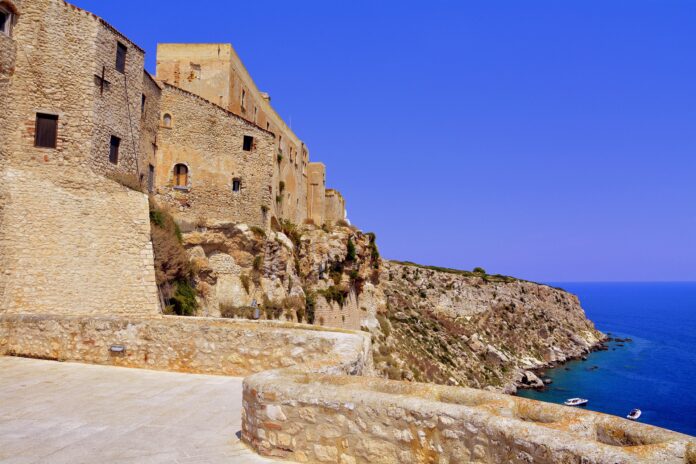“ Mysteries abound where most we seek for answers”
– Ray Bradbury
The world is full of mysteries. A number of incidents happens all around the world everyday of which some always remains undeciphered and turns into mysteries. One such mystery is the “ Lone Woman of San Nicolas Island. ”
Off the coast of California lies the Channel Islands, which are a group of eight small islands. One of those small islands was first sighted by a Spanish Explorer named Sebastian Vizcaino. On his visit to the island in 1602, he found that the island was inhabited by Nicoleno tribes who were staying there for 1800 years.
During the period of 1800s there was a sharp increase of exploration by the sailors. These sailors discovered new lands and made trade agreement with the Natives which sometimes led to conflict between the Natives and the explorers due to mistrust between the two.
One such dark incident was the conflict in 1811 between the Native Nicoleno tribes and the Native Alaskan Otter Hunters who were working for Russian American Company (RAC). The Alaskan Otter Hunters had a trade agreement with the Nicoleno tribes and everything was going fine but this did not lasted long. The Alaskan Hunters accused the Natives of killing their few hunters and also accused them of cheating. So they retaliated by attacking the Native tribes and destroyed their huts and other belongings. In the wake of attack the tribe population was reduced nearly to 20.
This incident remained unnoticed for almost two decades. In the year 1835 a Spanish Missionary in Santa Barbara island on hearing the news sent an expedition to the San Nicolas Island and on the recommendation of Catholic Priests, the Nicoleno tribes were removed from San Nicolas island to Santa Barbara islands. It was unclear that why did the Catholic priests recommended them to be migrated. Was it that they were simply worried about the fact that how will the tribe survive without resources or simply they want to convert the tribes.
During the 1850s there were tips from sailors they had seen huts made of whale bones and footprints on the shores of San Nicolas island. Many even claimed that they had also seen a woman in the shores of the island. Now the question is if there already had been a rescue mission in 1835 then how could a woman be left on the island. There were many explanations to this problem. Some claimed that on the day of rescue the woman jumped off the boat insisting that her brother was still left on the island. While few claimed that the day of rescue was hit with heavy storm and rainfall, so the rescue mission was probably in a hurry and left the woman on the island. Many also explained that the woman has nothing to do with the Nicoleno tribes, she might just wanted to stay alone, so she sailed to the island.
To check the facts claimed by the sailors Father Jose Gonzales Rubio sent an expedition to San Nicolas island led by George Nidever. After landing on San Nicolas, the crew started investigating. One of the members of the crew, named Carl Dittman found some footprints and a hut made of whale bones. He was sure that someone also was present in the island since all the crew members were wearing boots. The crew followed the footprints and eventually found the woman preparing her meal. Most of the times the tribes were cautious whenever they meet outsiders, but in this case it was exactly the opposite, the woman was cheerful when they met her and she even offered her meal to them. George Nidever in his memoir ‘The Life and Adventure of George Nidever ‘ described her as “old woman”. Instead of “ darting away from the captain smiled and bowed, chattering away to them in an unintelligible language”. She was “of medium height … about fifty years old but… still strong and active. Her face was pleasing as she was continuously smiling…Her cloth consisted of but a single garment of skins.” Despite living alone in the island for more than fifteen years the isolation did not have any effect on her and she was not skinny. She even managed to build a hut and was living in a cave. Since the crew did not understood her language they talked to her through hand gestures. Unable to know her name the crew named her the “Lone Woman”. The crew member offered her to come with them to Santa Barbara and without any hesitation she agreed to them and left the island keeping all her belongings behind.
After her arrival to Santa Barbara, she could not communicate with anyone but still managed to acclimatize and adjust to her new home. This came up as a service for everyone since all the tribe members living there are reluctant to live. There were around four members of her tribe present in Santa Barbara. However they could understood her language and were unable to contact with her. Another tribe member from Channel Islands who was a Chumash also failed to communicate with her. Despite the language barriers she did not stop nherself from mixing with others.
Unfortunately, her time was cut short in the island and just after spending seven weeks there she caught Dysentery. Her name was not known by anyone so the Catholic Priests baptized her and gave her the name Juana Maria. She died on her death bed on October 19, 1853. The story of Juana Maria fascinated many people. Scott O Dell’s classic ‘Island of the Blue Dolphin’ was inspired on Juana Maria.
The mystery of Juana Maria continues even today. What makes it strange is that how she managed to live in an island for more than fifty years, how she ended up there and what was her true identity. Even if she belonged to any of the tribes of Channel Islands then why did not she able to communicate with the other tribes of the Channel Islands present there in Santa Barbara. The mystery of ‘Lone Woman’ could have been deciphered if only her language could be understand by someone.
By AGNIDHRO GANGULY, Khardah, Kolkata
















